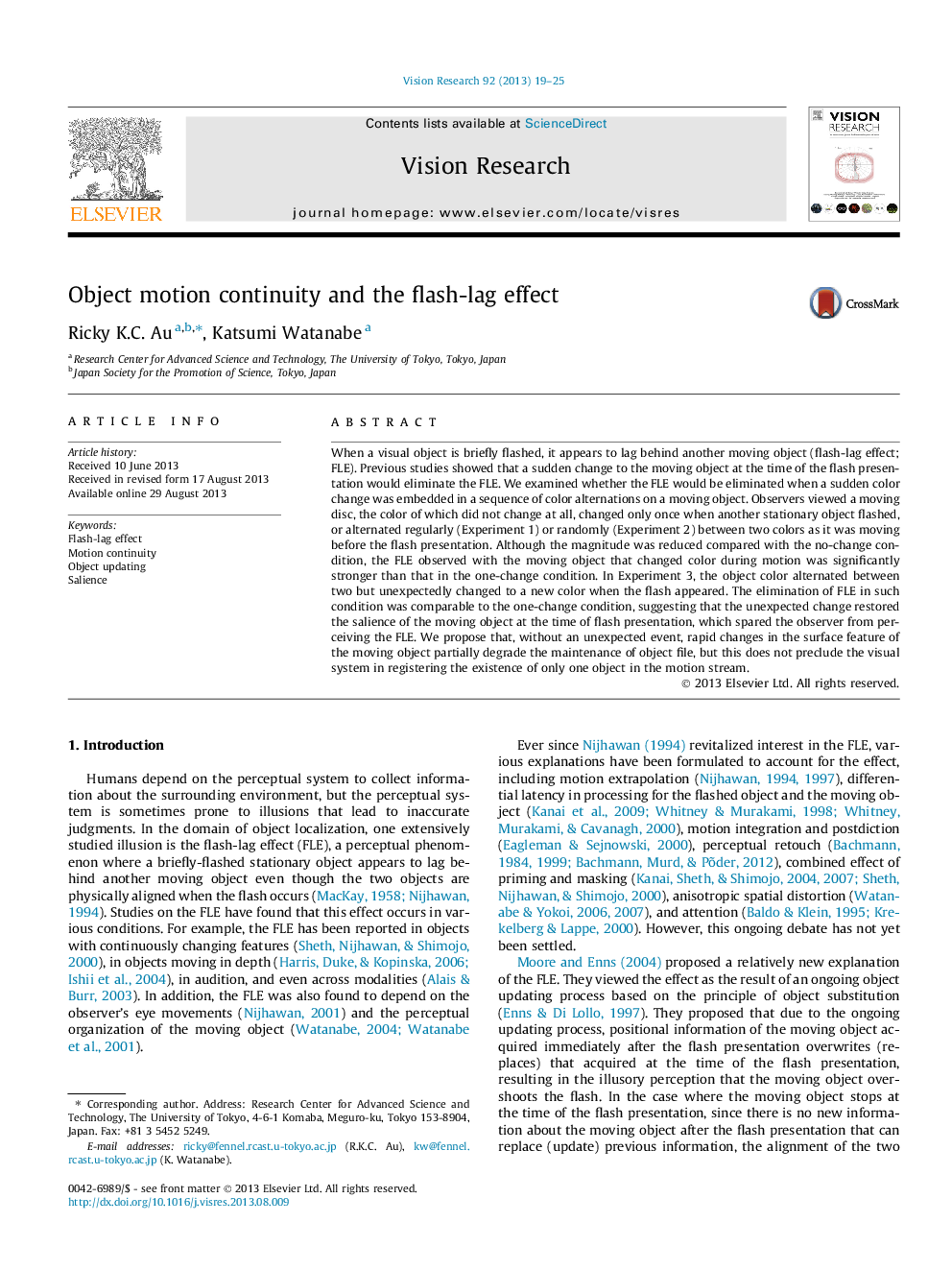| Article ID | Journal | Published Year | Pages | File Type |
|---|---|---|---|---|
| 6203558 | Vision Research | 2013 | 7 Pages |
â¢We studied how color changes during motion would modulate the flash-lag effect (FLE).â¢FLE was reduced but survived with a moving object with alternating or random color changes.â¢An unexpected change to a new color in the alternating stream eliminated the FLE.â¢Changes in surface feature degrade the maintenance of object file.â¢An unexpected change might indicate that multiple objects exist in the stream and thus eliminate FLE.
When a visual object is briefly flashed, it appears to lag behind another moving object (flash-lag effect; FLE). Previous studies showed that a sudden change to the moving object at the time of the flash presentation would eliminate the FLE. We examined whether the FLE would be eliminated when a sudden color change was embedded in a sequence of color alternations on a moving object. Observers viewed a moving disc, the color of which did not change at all, changed only once when another stationary object flashed, or alternated regularly (Experiment 1) or randomly (Experiment 2) between two colors as it was moving before the flash presentation. Although the magnitude was reduced compared with the no-change condition, the FLE observed with the moving object that changed color during motion was significantly stronger than that in the one-change condition. In Experiment 3, the object color alternated between two but unexpectedly changed to a new color when the flash appeared. The elimination of FLE in such condition was comparable to the one-change condition, suggesting that the unexpected change restored the salience of the moving object at the time of flash presentation, which spared the observer from perceiving the FLE. We propose that, without an unexpected event, rapid changes in the surface feature of the moving object partially degrade the maintenance of object file, but this does not preclude the visual system in registering the existence of only one object in the motion stream.
